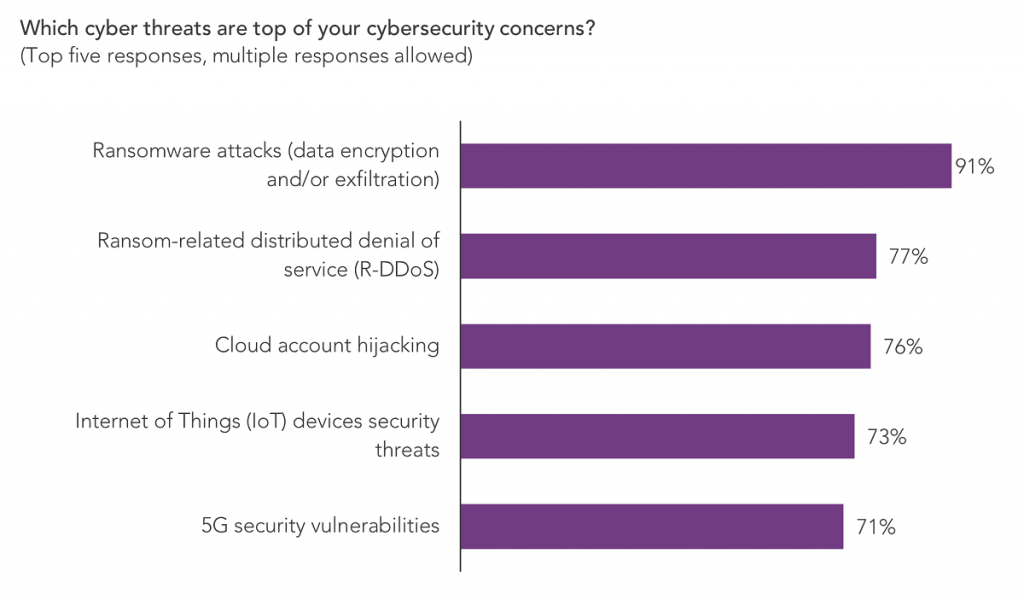Consumer technology innovation continues to evolve, and with it, an increased level of interconnectivity. However, the growth of smart technologies via internet of things (IoT) devices brings a new security threat level. In response, Samsung has announced Samsung Knox Matrix, a private blockchain system to secure consumers’ IoT devices. If Knox Matrix is successful in the consumer market, it should prove to CISOs that blockchain can be leveraged to help secure their organization’s IoT devices – and they should start exploring this today.
HFS has monitored the IoT market for some time. In the 2021 iteration of our HFS Top 10: Internet of Things (IoT) Service Providers report, we explained that leading service providers reported significant double-digit revenue growth in their IoT services divisions.
Consumers are curating extensive personalized ecosystems of smart technologies, ranging from their smartphones to a catalog of devices forming smart homes.
Further, disruptive businesses continue to emerge, deploying IoT devices to collect business-level data for analysis and intelligent decision-making, such as manufacturing plant performance optimization, predictive asset management, and risk assessment for insurers.
While organizations are excited about IoT’s benefits, they must be wary of its shortcomings. Expanding the surface of your technology landscape leads to increased security vulnerability—an organization is only as secure as its weakest link. Despite this, Exhibit 1, shows only 71% of cybersecurity executives ranked IoT devices’ security threats as a top priority. Are they underestimating the importance of securing their IoT devices?

Sample: Cybersecurity Pulse, October 2021; 150 cybersecurity executives from Global 2000 enterprises
Source: HFS Research, 2022
IoT isn’t the only emerging technology picking up traction. More blockchain engagements are reaching production and delivering business value by leveraging the technology. However, we haven’t yet seen mass blockchain adoption to tackle security challenges, and it’s easy to see why. Privacy and security concerns, among others, stalled enterprise blockchain’s growth. Blockchain may not be your first thought when it comes to addressing IoT’s security challenges, but it might have potential.
Both blockchain and IoT involve elements of decentralization; the internet of things is a decentralized network of devices, while blockchain is a decentralized ledger of information. The key difference is that while IoT devices collect unique data, every participant in a blockchain network has a copy of the same data. Because of this, introducing blockchain to an IoT network could provide the interconnectivity of devices needed to identify security breaches and tackle security challenges; at least, that’s what Samsung thinks.
Samsung is keen to emphasize that their consumer solution uses a private blockchain, so no personal information is shared publicly, and that blockchain only plays a minor role in the solution. Knox Matrix leverages the blockchain to introduce communication between devices to automatically and quickly detect compromised devices infected with malware or any other invasive software. The technology is supplemented by a Samsung Threat Intelligence Team, which monitors the internet to detect new security threats and hacking trends. In addition to detection, Knox Matrix aims to help with prevention by monitoring devices to ensure their software is up-to-date and secure.
Knox Matrix solution won’t be on the market until 2023, initially launching exclusively with their own devices. There’s a long wait until we can see it in action. However, security executives should be intrigued by the prospect of using blockchain to provide “safety in numbers” for IoT devices and investigate similar solutions through their IoT networks.
CISOs risk underestimating the importance of securing their IoT networks if it continues to sit fourth in their list of concerns while the market steadily grows. Blockchain is by no means a silver bullet to address these concerns – but if Samsung’s investment in Knox Matrix is a success in the consumer market, it demonstrates that blockchain could play a role in addressing security worries for enterprises, too.
Register now for immediate access of HFS' research, data and forward looking trends.
Get StartedIf you don't have an account, Register here |
Register now for immediate access of HFS' research, data and forward looking trends.
Get Started